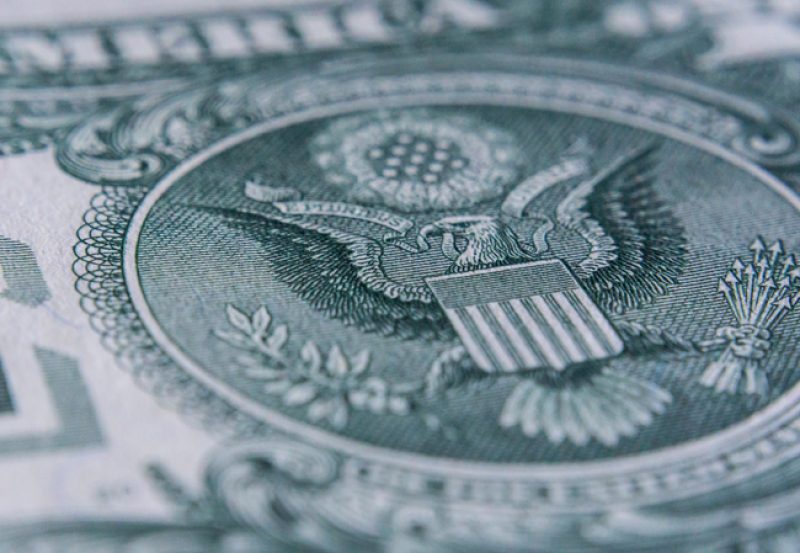by Sonal Desai, Ph.D., Franklin Templeton Investments
Russia’s invasion of Ukraine, with its tragic human toll, likely marks a turning point for the geopolitical and global economic order. A lot has been written on the many aspects of this war. In this note, I want to focus on two key economic questions: firstly, the implications for the US dollar’s status as dominant reserve currency and, secondly, the implications for the pace of the energy transition.
Will financial sanctions backfire and accelerate the displacement of the US dollar as primary global reserve currency? The freezing of Russia’s foreign exchange reserves has been likened to the nuclear option of financial sanctions, depriving Russia of an estimated 60% of its foreign exchange (FX) cushion. The unexpected move, however, has left some countries wondering whether in the future it might be used against them for lesser violations.
Some commentators argue this could lead countries to diversify away from US dollar-denominated reserves, and cause the US dollar to lose its status of primary global reserve currency. China’s renminbi is seen as the main beneficiary and potential successor.
But the truth is that currently There Is No Alternative (TINA) to the greenback. The dollar’s primacy rests on several pillars, most notably: (1) the US’ major role in the global economy; (2) its sound macro policies and strong institutions; and (3) the huge, liquid and transparent market for US dollar-denominated safe assets.
China’s economy has grown considerably in size and strength, but its currency is not freely convertible, and its exchange rate is strictly managed by China’s monetary authorities. China imposes a number of restrictions on investments in renminbi-denominated assets. The increased share of international trade transactions denominated and settled in renminbi reflects bilateral agreements rather than universal acceptance of the renminbi as a medium of exchange.
To replace the United States as the issuer of the world’s global currency, China would need to make the renminbi fully convertible, which in turn would require much deeper liberalisation of its financial system and its economy. In recent years instead, China’s policymakers have been re-tightening their control over the economy.
The International Monetary Fund’s (IMF’s) Special Drawing Rights (SDR) are also touted as a potential alternative. But as the IMF itself notes, the SDR is not a currency: it is “a potential claim on the freely usable currencies of IMF members”. It is a unit of account based on a basket of currencies, including the US dollar (with about 42% weight), the euro (31%), the British pound (8%), the Japanese yen (8%) and the Chinese renminbi (11%). A country cannot spend an SDR to finance its imports. The SDR consists largely of US dollar and euro holdings, which brings us back to square one—as you can see from the weights, the United States and Europe hold a “blocking majority” in the SDR as well. Again: the SDR is a unit of account, not a currency. And, well—it can’t be a reserve currency if it’s not even a currency.
Some countries might feel less comfortable holding a substantial share of their foreign exchange reserves in US dollars. For now, however, there is no alternative.
We are likely to see a further retreat from globalisation; however, this time on the financial side. Globalisation of trade has already been rolled back by protectionist barriers, bilateral agreements, and a growing desire for self-sufficiency in key manufacturing capabilities. To the extent that some countries might now try to become less dependent on the US dollar or on the SWIFT payment system, possibly gravitating towards China’s competing Cross-Border Interbank Payment System (CIPS), what we will see is some re-fragmentation of the global financial system.
What impact should we expect on energy policy? The United States and United Kingdom have announced a ban on Russia’s oil imports, which account for only about 8% of their total oil imports. Europe, which last received about 45% of its total gas imports from Russia (40% of European Union [EU] total gas consumption),1 targets a two-thirds reduction over the course of 2022. Note that Germany depends on Russia for about two-thirds of its gas needs.
International oil prices have surged, and so have gasoline pump prices. Western governments are scrambling to lessen the impact on their consumers and industries. Some US politicians are calling for a suspension of the federal gasoline tax; the EU is mulling fiscal support at the country and EU-wide level.
More renewable energy would help—and the European plan includes accelerated deployment of wind and solar power. But, it will not be enough, at least until we see major technological advances, including on energy storage. This suggests that some Western countries might now also reconsider their attitude toward nuclear and fossil fuels.
Earlier this year, the European Commission approved a proposal to classify nuclear and gas-powered plans as “green”. In the United Kingdom, some ministers suggested fracking should be put back in the agenda. In continental Europe, which has important shale gas reserves, opposition to fracking might weaken if energy costs remain high. The US administration remains opposed to more domestic oil and gas production even as it pressures other oil-exporting countries to boost their output; if high energy prices continue to inflict pain on households and businesses, however, this stance might become costlier in terms of voter support. Even as they remain committed to renewables, Western governments now face some tough choices on their energy transition strategies.
Russia’s invasion of Ukraine marks another step in the ongoing retreat from globalisation and strengthens the harsh economic reality check that policymakers are facing: supply chain disruptions persist, inflation keeps rising, and the energy transition imposes hard tradeoffs. After over a decade of extraordinarily loose policies, we can no longer counter adverse shocks with further fiscal and monetary expansion; in fact, moving even further away from sound macro policies is the one thing that could eventually undermine the US dollar’s global dominance.
What Are the Risks?
All investments involve risks, including possible loss of principal. The value of investments can go down as well as up, and investors may not get back the full amount invested. Special risks are associated with investing in foreign securities, including risks associated with political and economic developments, trading practices, availability of information, limited markets and currency exchange rate fluctuations and policies. Investments in emerging markets, of which frontier markets are a subset, involve heightened risks related to the same factors, in addition to those associated with these markets’ smaller size, lesser liquidity and lack of established legal, political, business and social frameworks to support securities markets. Because these frameworks are typically even less developed in frontier markets, as well as various factors including the increased potential for extreme price volatility, illiquidity, trade barriers and exchange controls, the risks associated with emerging markets are magnified in frontier markets. To the extent a strategy focuses on particular countries, regions, industries, sectors or types of investment from time to time, it may be subject to greater risks of adverse developments in such areas of focus than a strategy that invests in a wider variety of countries, regions, industries, sectors or investments.
Important Legal Information
This material is intended to be of general interest only and should not be construed as individual investment advice or a recommendation or solicitation to buy, sell or hold any security or to adopt any investment strategy. It does not constitute legal or tax advice. This material may not be reproduced, distributed or published without prior written permission from Franklin Templeton.
The views expressed are those of the investment manager and the comments, opinions and analyses are rendered as at publication date and may change without notice. The underlying assumptions and these views are subject to change based on market and other conditions and may differ from other portfolio managers or of the firm as a whole. The information provided in this material is not intended as a complete analysis of every material fact regarding any country, region or market. There is no assurance that any prediction, projection or forecast on the economy, stock market, bond market or the economic trends of the markets will be realised. The value of investments and the income from them can go down as well as up and you may not get back the full amount that you invested. Past performance is not necessarily indicative nor a guarantee of future performance. All investments involve risks, including possible loss of principal.
Any research and analysis contained in this material has been procured by Franklin Templeton for its own purposes and may be acted upon in that connection and, as such, is provided to you incidentally. Data from third party sources may have been used in the preparation of this material and Franklin Templeton (“FT”) has not independently verified, validated or audited such data. Although information has been obtained from sources that Franklin Templeton believes to be reliable, no guarantee can be given as to its accuracy and such information may be incomplete or condensed and may be subject to change at any time without notice. The mention of any individual securities should neither constitute nor be construed as a recommendation to purchase, hold or sell any securities, and the information provided regarding such individual securities (if any) is not a sufficient basis upon which to make an investment decision. FT accepts no liability whatsoever for any loss arising from use of this information and reliance upon the comments, opinions and analyses in the material is at the sole discretion of the user.
Products, services and information may not be available in all jurisdictions and are offered outside the U.S. by other FT affiliates and/or their distributors as local laws and regulation permits. Please consult your own financial professional or Franklin Templeton institutional contact for further information on availability of products and services in your jurisdiction.
Issued in the U.S. by Franklin Distributors, LLC, One Franklin Parkway, San Mateo, California 94403-1906, (800) DIAL BEN/342-5236, franklintempleton.com – Franklin Distributors, LLC, member FINRA/SIPC, is the principal distributor of Franklin Templeton U.S. registered products, which are not FDIC insured; may lose value; and are not bank guaranteed and are available only in jurisdictions where an offer or solicitation of such products is permitted under applicable laws and regulation.
CFA® and Chartered Financial Analyst® are trademarks owned by CFA Institute.
__________________________
1. Source: International Energy Agency, “How Europe can cut natural gas imports from Russia significantly within a year”, 3 March 3, 2022.
This post was first published at the official blog of Franklin Templeton Investments.
















